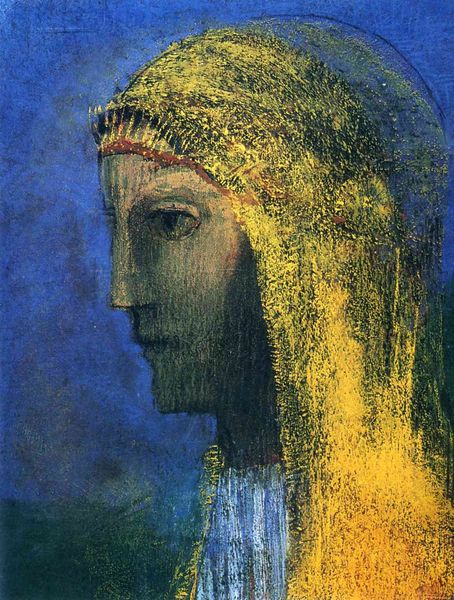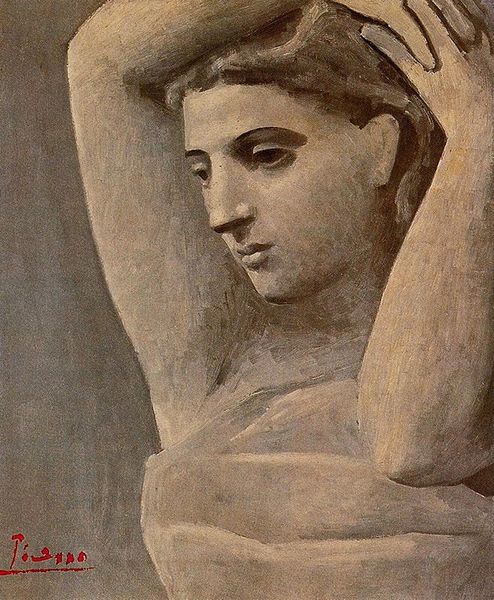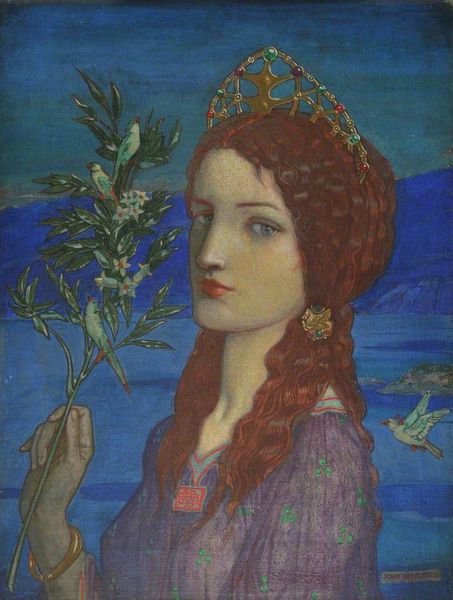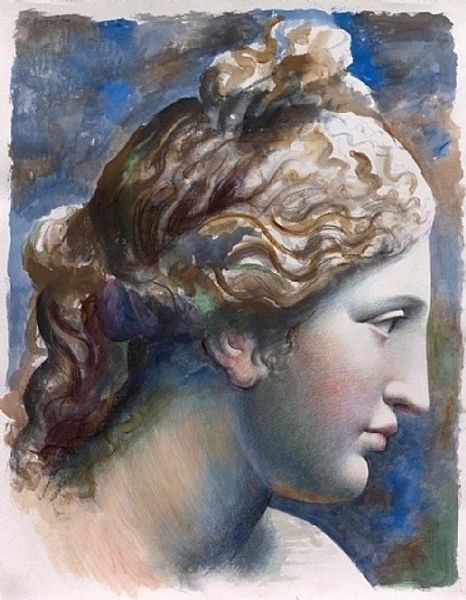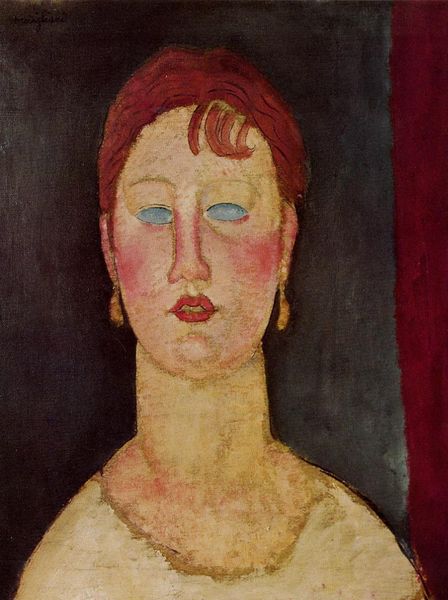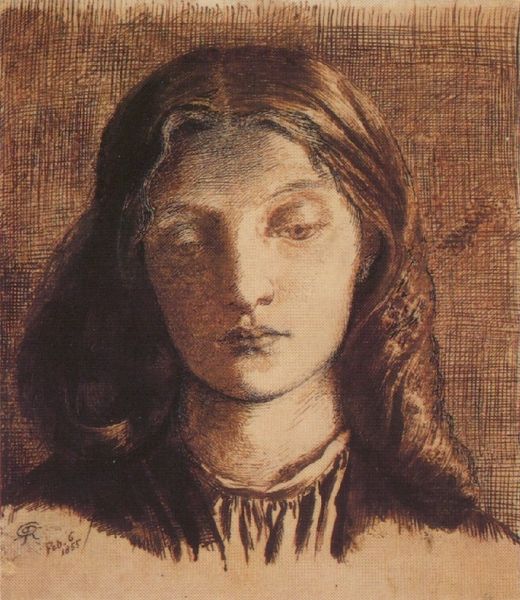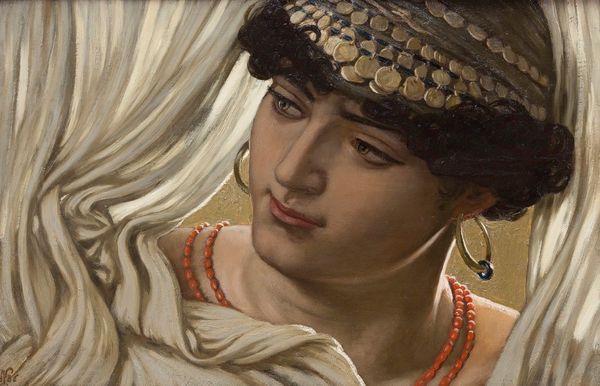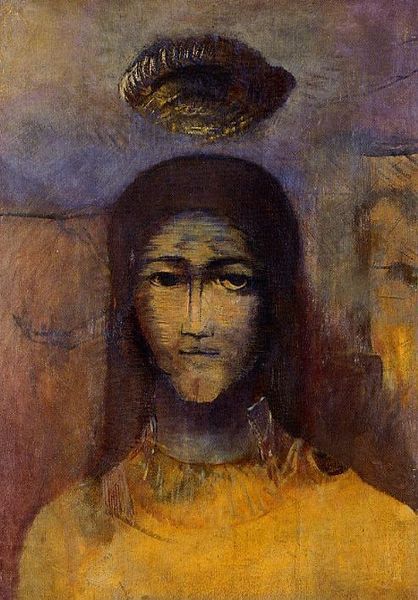
#
facial expression drawing
#
head
#
portrait reference
#
acrylic on canvas
#
portrait head and shoulder
#
animal drawing portrait
#
portrait drawing
#
facial portrait
#
forehead
#
portrait art
#
fine art portrait
#
digital portrait
Copyright: Public domain
Here is a portrait made with paint by John Duncan, sometime between the late 19th and early 20th centuries. Duncan was part of the Celtic Revival, a movement which sought to reimagine Scottish identity through its pre-Christian myths and legends. This portrait is a good example of the movement's aesthetic. The woman's stylized dress and head covering seem to evoke a romanticized ancient past. Her downcast gaze lends her an air of melancholy, and the dark shadow behind her head adds to the somber mood. Portraits like this one tread a fine line. On the one hand, it seeks to create an image of a specifically Scottish woman; on the other hand, this image seems to draw from a broader range of European sources, from the Pre-Raphaelites to the Symbolists. Does this picture solidify a sense of Scottish identity, or does it dilute it?
Comments
No comments
Be the first to comment and join the conversation on the ultimate creative platform.
